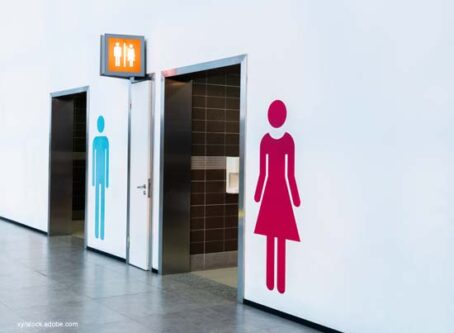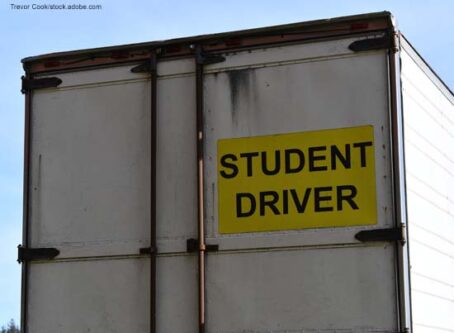AEB mandate would ‘jeopardize’ truckers’ safety, OOIDA says
A proposal to require automatic emergency braking systems on heavy trucks fails to ensure the technology will meet necessary safety standards, the Owner-Operator Independent Drivers Association said.
In formal comments filed on Sept. 5 to the National Highway Traffic Safety Administration and the Federal Motor Carrier Safety Administration, OOIDA opposed efforts to mandate the technology and called out the agencies for failing to consult with truck drivers before submitting a proposal.
“The notice of proposed rulemaking mandates AEB systems without sufficiently addressing false activations, properly consulting with professional truck drivers or completing ongoing research programs,” OOIDA wrote in comments signed by President Todd Spencer.
OOIDA, which has more than 150,000 members, is a national trade association representing small-business truck drivers.
Proposal
In July, NHTSA and FMCSA published a joint proposal that would require AEB systems and electronic stability control systems on new vehicles that weigh more than 10,000 pounds.
The proposal calls for all Class 7 and 8 vehicles – those weighing more than 26,000 pounds – to be required to meet the automatic emergency braking standards three years after the rule takes effect. All Class 3-6 vehicles – those weighing 10,001-26,000 pounds – would be required to meet the automatic emergency braking and electronic stability control requirements in four years. Small-volume manufacturers would have until five years after the final rule took effect.
The proposal would not require existing heavy vehicles to be retrofitted with automatic emergency braking technology.
Congress mandated the agencies to issue a regulation on automatic emergency braking systems. However, OOIDA noted that Congress also required the agencies to consult with representatives of commercial motor vehicle drivers regarding their experiences with emergency braking systems.
“Frankly, the notice of proposed rulemaking tries to hastily meet the congressional deadlines imposed within the bipartisan infrastructure law at the expense of satisfying the requirements for driver consultation and safety,” OOIDA wrote. “As drivers have often seen, given a choice between listening to truckers and mandating alleged safety technology, NHTSA and FMCSA seem poised to ignore the operational experience and concerns of those who make their living behind the wheel. Instead, DOT should listen to truckers and take all the time necessary to address the shortcomings of these systems.”
Feedback
The agencies gave the public 60 days to comment on the proposal. According to the regulations.gov website, NHTSA and FMCSA received a total of nearly 1,100 comments. Many of them came from truck drivers who said they have had bad experiences with the technology.
“The technology isn’t ready,” Michael Beyer wrote. “I had that system on a truck before. The false positives I got were staggering. Emergency braking (activated) because I was passing a vehicle around a curve or because a vehicle that had exited was slowing on a ramp in my right … If something comes in front of a vehicle on a snowy or icy road, a full brake application would be disastrous.”
Other truck drivers told the agencies that they experienced false activations from shadows while traveling under an overpass.
OOIDA also used its comments to relay truck drivers’ negative experiences with the technology.
“While there are many operational concerns about AEB systems, truckers are especially worried about the potential for false activations,” OOIDA wrote. “As you can imagine, drivers are alarmed the 80,000-pound truck they are driving could unexpectedly brake to a complete stop for no reason.”
Investigation
NHTSA recently opened an investigation into false automatic braking on certain Freightliner and Western Star trucks.
There were 18 complaints of false automatic emergency braking activation “without an actual roadway obstacle.” In some instances, the false activation brought the truck to a complete stop in the travel lane. NHTSA did not report any crashes caused by the false braking.
The investigation, which could affect as many as 250,000 trucks, aims to determine if the alleged defect creates an unreasonable safety risk.
Despite the investigation of false braking, NHTSA and FMCSA still plan to move forward with the proposal.
“The agency is aware that some current AEB systems may occasionally cause unwarranted braking events or false activations, which could lead to unintended consequences,” FMCSA and NHTSA wrote in the notice. “We are thus proposing two test scenarios which vehicles must pass without false activation of the AEB system.”
The agencies acknowledged in the notice, however, that the proposed false activation tests “establish only a baseline for system functionality” and that they “are not comprehensive, nor sufficient to eliminate susceptibility to false activations in the myriad of circumstances in the real world.”
What’s next?
The 60-day public comment period ended Tuesday, Sept. 5. Now, the agencies must review the nearly 1,100 comments and determine whether or not to move forward with a final rule.
OOIDA asked the agencies to address the false activation problems before implementing a mandate.
“We urge NHTSA to adopt more safeguards before any AEB mandate is implemented,” OOIDA wrote. “Any final rule must incorporate additional layers of performance testing to mitigate false activation alerts. NHTSA should require further documentation from manufacturers demonstrating that process standards were followed specific to the consideration of false application of automatic braking.
“If DOT fails to correct each of these shortcomings, the final AEB rule will jeopardize our members’ safety and create needless highway safety risks.” LL









